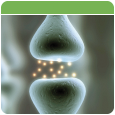Mongersen in Crohn’s treatment
- There were several milestones in Crohn's disease treatment in the second half of the 20th century. The 5-aminosalicylic acid (5-ASA), originaly proposed to treat rheumatoid arthritis, started slowly to be adopted to treat idiopathic bowel disease (IBD). By the end of the century the onset of infliximab (Remicade) – the anti-TNFalpha agent – revolutionized the IBD treatment, with further biologics – adalimumab (Humira) and certolizumab pegol (Cimzia) – following. Integrin inhibitors entered the IBD treatment in the very begining of the new millenium – natalizumab (Tysabri) was approved in 2004, vedolizumab ten years later.
- At present, targeting an entirely new mechanism may considerably improve the quality of life of the Crohn’s patients. Mongersen, a substance with a potential of restoring TGF-β1 signaling, seems to be effective in the Crohn’s disease treatmen, according to the results of a trial published in the March 19 issue of the New England Journal of Medicine.
- One of the features of Crohn’s–type inflammation is a reduced activity of the transforming growth factor β1 (TGF-β1), a cytokine with strong immunosuppressive activity. This is due to high levels of SMAD7, a physiological inhibitor of TGF-β1 signaling. Mongersen, an oral SMAD7 antisense oligonucleotide, targets ileal and colonic SMAD7.
- The primary outcome of the trial was clinical remission at day 15, defined as a Crohn’s Disease Activity Index (CDAI) score of less than 150, with maintenance of remission for at least 2 weeks. The proportions of patients who reached the primary end point were 55% and 65% for the 40-mg and 160-mg mongersen groups, respectively, as compared with 10% for the placebo group (P<0.001). The Crohn’s disease patients receiving mongersen had significantly higher rates of remission and clinical response than those who received placebo.
- Read more: Monteleone G1, Neurath MF, Ardizzone S, et al. Mongersen, an oral SMAD7 antisense oligonucleotide, and Crohn's disease. N Engl J Med. 2015 Mar 19;372(12):1104-13. doi: 10.1056/NEJMoa1407250.



